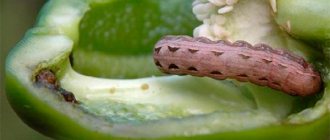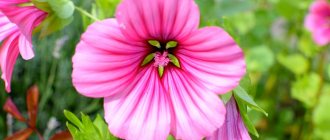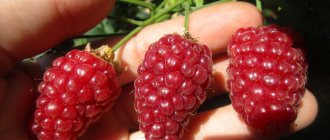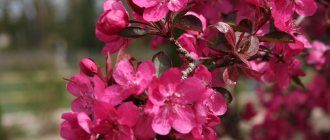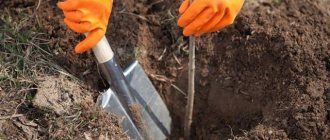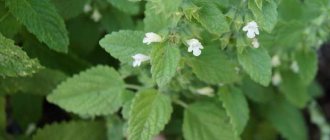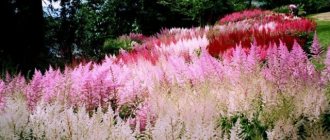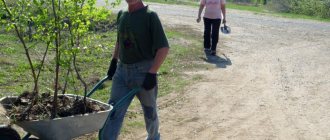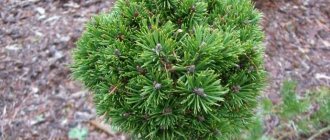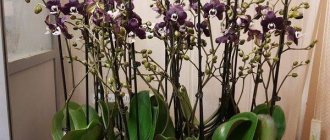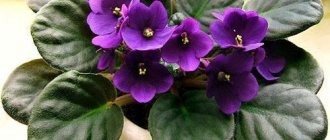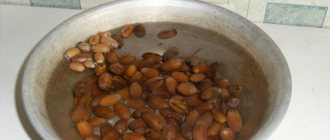Characteristics of SVG
These forms of hybrids were created by crossing Sand cherry with Ussuri plum, and other varieties of plums were also used in the process. These plants compare favorably with ordinary varieties of plums - they are more frost-resistant, do not rot, and have a decorative and neat appearance. During wintering, they can be almost completely covered with snow, due to which high yields are maintained almost every year. Flowering of SVG occurs one and a half weeks later than that of plums, so they are additionally protected from frost.
Description of the hybrid
The plum-cherry tree was obtained as a result of painstaking work by crossing the Japanese plum and the American Bessel cherry.
At the moment, quite a lot of hybrids have been bred that grow well and produce rich harvests in agricultural firms and in garden farmsteads.
The hybrid of cherry and plum enters the fruiting period early. Already in the second year after planting, the first harvest is harvested. This is one of the main advantages of garden culture.
Important characteristics of the variety:
- The trees reach a height of 120-150 cm, rarely 200 cm (this depends on the variety). Low-growing, spreading shrubs are much easier to care for and collect ripe fruits from them.
- Depending on the SVG variety, a different crown is formed; it can be either pyramid-shaped or slate-shaped.
- Thanks to its branched and powerful root system, the tree tolerates difficult weather conditions (low temperatures and drought).
- The leaves of the hybrid are arranged alternately. They are large, wide, deep green, elliptical in shape with a jagged edge. The narrow side of the leaves is attached to short petioles.
- This miracle tree blooms much later than the mother varieties. Gardeners note this property as a big plus. Because this way it is possible to avoid the negative impact of possible late frosts on the ovary and preserve the future harvest. Although, many gardeners claim that, even despite unfavorable weather conditions, the hybrid produces a high yield.
These crops will perfectly complement any garden with their unusual appearance. They will fit perfectly even into a small area. The hybrid does not take up much space and does not block sunlight from other plants.
Advantages of SVG
The main advantages of these fruits are their high yield, frost resistance and early fruiting. The trees themselves are low-growing, do not require much space for full growth and fruiting, do not shade other plants and love the sun. The plum-cherry hybrid is grown in several varieties. They may differ in color and shape, but they all look more like plums and have a unique combined taste of cherry and plum.
Origin story
Professor Hansen was the first to produce plum-cherry hybrids in the USA.
The starting material is two trees - Bessey cherry and Japanese plum. From cherries, the hybrid received unpretentiousness of cultivation, and from plums - the size and shape of the fruit, as well as taste. Growing and testing have shown that the hybrids produce a rich harvest and tolerate sub-zero temperatures.
We continued selection in Krasnoyarsk and Altai, and are successfully grown in the Southern Urals. Hybrids are used as a purely fruit crop, and as a result of selection, a number of rootstocks for seedlings of the plum genus have been obtained. Hybrids are a promising crop.
How and at what time to plant trees?
Young seedlings can be purchased both in autumn and spring. It’s good if they are sold in containers, in which case their root system is less damaged, which increases the stability and survivability of the crop in new soil. Seedlings can be planted from containers at any convenient time, but, judging by the advice of knowledgeable gardeners, it is preferable to plant stone fruit trees in the spring.
In the case when the seedling was purchased in the fall, it can be placed in the cellar directly with the container. However, there is a risk of premature bud break; this can weaken an already young and fragile plant, so it would be better to dig it in in the fall.
Reviews
Tatyana Nikolaevna
I have three hybrids of Canadian selection growing in my garden (one of which is Manor). The trees have been bearing fruit well for 5 years. The berries are very tasty. The variety with red flesh is especially good.
Daria Sergeevna
Three years ago I bought two seedlings of a plum-cherry hybrid. Last year I already tried the first harvest. Despite the fact that the berries were a little small, my household appreciated them. The taste is something between aromatic plum and cherry.
Olga
I would like to share my impressions of the first, albeit very small, harvest of the plum cherry hybrid. The berries taste divine, a little sour, but this gives them a little piquancy. They turned out to be slightly larger than cherries, but smaller than plums.
Pollination and fruiting
The plum-cherry hybrid is a fast-bearing tree, and the plant also exists in the form of a shrub. All of them are distinguished by abundant yields. You should know that all varieties of this crop should be planted in pairs or in large numbers, since by themselves they are sterile. To ensure pollination, ordinary cherries or plums, common in gardens, are not suitable. It is advisable to buy several varieties of SVG as pollinators, or you can plant Bessey cherry nearby. She is also suitable for this role, because it was with her participation that some varieties of SVG were created.
In order for trees and bushes to be well pollinated, they should be planted at a distance of 2.5 m from each other. Their flowering occurs a little later than that of ordinary plums, so they are not afraid of spring frosts. But even if this happens, the trees will suffer little, and the volume of their fruiting will remain the same.
How does SVG reproduce?
In order to increase the number of plum-cherry hybrids in your garden, it is not necessary to buy new seedlings. You can propagate existing hybrids using cuttings or horizontal layering.
- In the first case, during the period of active growth at the beginning of summer, it is necessary to separate several shoots from the plum-cherry tree, trim them and keep them in a root-forming solution, and then root them in a greenhouse until autumn. With the onset of September, the seedlings are dug up and sent for storage in a closed barn - full planting is carried out only after 2 years.
- When propagating horizontal layering, suitable branches are bent to the ground, fixed and sprinkled with soil. When the cuttings take root and are well established in the soil, they can be separated from the mother plant.
The plum-cherry hybrid is a very interesting option for garden growing. It requires very little care, and the tree produces large, sweet and plentiful fruits.
How to properly care for the crop?
As for cultivation, we can say that SVG should be cared for in the same way as an ordinary plum. A young tree that still bears little fruit should not be fertilized with nitrogen; this can only be done if it has begun to lag behind in development. You need to feed in June. If the tree is fertilized later, it may begin to grow, which will ultimately lead to a decrease in its winter hardiness.
Ash is considered a very useful fertilizer; its composition contains various microelements, phosphorus, potassium and calcium, and it does not contain nitrogen. It is also advisable to treat the bush with complex fertilizers several times from spring to autumn by spraying it on the branches and leaves.
Secrets and subtleties of agricultural technology
Caring for a plum-cherry hybrid is not difficult, the main thing is to follow many rules.
Watering
During the period of active growth of the hybrid, it must be watered at least 5 times.
In this case, the guideline is the condition of the soil - the soil should be dry to a depth of 40 cm. In this case, 5-6 buckets of water should be added under the tree at a time. And if the crop is already bearing fruit - 10 buckets.
Fertilizer
Of all the top dressings, the best option is to apply ash under the tree. It is not recommended to apply nitrogen fertilizers until the hybrid begins to bear fruit well. Otherwise, shoots will begin to actively grow, and this will negatively affect the harvest.
In the fall, you need to feed the stone fruit crop with potassium fertilizers. This will help the tree to withstand bad weather conditions.
Treatment
The first time, preventive measures for processing SVG should be carried out before the active movement of juice begins. In this case, a urea solution is ideal. The culture can also be treated with Zircon. The hybrid is sprayed a second time in the fall.
Trimming
The plum-cherry hybrid is pruned in the same way as a regular plum. In the spring, it is necessary to remove all broken or damaged branches and shoots that thicken the top.
Plum-cherry hybrid: propagation
SVG is propagated by horizontal layering, bending the lower branch; It is also possible to plant them by cuttings. It is undesirable to grow a plant from seeds, since the quality of the new crop can change for the better or for the worse. A good feature of these hybrids is the absence of root shoots, so there is no need to dig up root shoots every year.
What disease are they susceptible to?
Like other stone fruits, SVG can be susceptible to monilial blight. After the defeat, the plant takes on a scorched appearance, the young flowers are the first to suffer, then the leaves, and then the shoots. At the first signs of the disease, you should immediately cut down the affected branches and burn them. In the spring, before the flowers and buds bloom, the plant should be sprayed with Bordeaux mixture, copper oxychloride or HOM. The procedure should be repeated, but in the summer.
Disease and pest control
The main danger facing stone fruit crops is moniliosis. The wood dries as if it had been burnt. Initially, the flowers are affected, then the leaves and, ultimately, the shoots are affected. When the disease appears, the affected branches are cut off and burned. For preventive purposes, spray with Bordeaux mixture.
It is important to remember that this is not a cherry or a plum, but an independent crop that has its own characteristics of growth and development.
Read more: Breeding bulls for meat as a business: where to start, is it profitable to keep mini-farms, a plan for how to start a business for beginners at home
The main threat to the hybrid, like its “parents,” is moniliosis. The bush looks burnt: the flowers begin to dry out first, then the leaf blades, and the shoots are the last to be affected. At the first signs of disease, the affected parts are cut off and burned. For preventive purposes, spraying with Bordeaux mixture is used.
To successfully grow and propagate a plum-cherry hybrid, you need to remember one thing: this plant is not a cherry or a plum, but an independent crop with its own characteristics.
The main danger, like for the “parents,” is moniliosis. If the plant has been affected, the bush begins to look scorched: the flowers are the first to get sick, they dry out, and the shoots are the last to suffer. At the first symptoms of infection, the affected areas must be cut off, thoroughly removed and burned.
Important! A preventative measure is to treat the plant and soil around the tree with Bordeaux mixture. As an alternative, copper oxychloride can be used.
To protect young seedlings from rodents, the plant must be wrapped in material or covered with pine branches.
In order to grow a large and healthy tree that will bear fruit abundantly and regularly, one must take into account that it is not a cherry or a plum, but an independent unit, which is characterized by individual characteristics.
Common varieties of SVG
The plum-cherry hybrid “Opata” grows in the form of a medium-sized spreading bush up to 2 m. 3-4 years after planting, it begins to produce a bountiful harvest, which can bend the branches to the ground, so to maintain their integrity it is necessary to provide supports. The fruits are red-brown on the outside with yellow-green flesh and weigh 15-20 g.
The pyramidal plum-cherry hybrid is a bushy plant with a pyramidal shape, hence the name. It is characterized by increased frost resistance. The bush can also be used as a decorative element in the garden. Fruits can appear already in the second year of the plant’s life; it blooms and bears fruit profusely, producing yellow-green fruits with an average weight of 15 g, their pulp is juicy and sweet.
The SVG “Beta” variety is distinguished by its low-growing bush (no more than 1.5 m), the crown of which is slate-shaped. The bush produces abundant fruit; its fruits are dark red in color, weighing 10-15 g, and taste like cherries. Another distinctive feature of the variety is its small seeds, which are difficult to separate from the pulp.
This is important to know
During the flowering period of the tree, its branches are completely covered with small white flowers, from which a sweet aroma spreads throughout the area. Snow-white flowers create a crown that covers the bark of the tree - this is an amazing sight.
To ensure that branches with fruits do not touch the ground, you need to install reliable support around the bush at a height of 80 cm from the ground level along the entire contour.
The crop ripens differently in different regions. Approximate date: end of August, beginning of September. The size and shape of the fruits differ depending on the variety. The fruits are:
- elongated with red-brown skin;
- round shape with a yellow tint.
The taste of the fruits is more reminiscent of plums, but there are also berries where the flavor of cherry dominates. Juicy and aromatic berries are used to make delicious preserves, marmalade, confiture and marmalade.
Useful notes from experienced gardeners
Plum-cherry hybrids, reviews of which are quite numerous, are very popular. And it is not surprising, because the fruits of SVG are excellent for processing. You can make delicious preserves, jams or compotes from them.
Most experienced gardeners have noticed that SVGs do not like cold winds, so it is preferable to allocate a place for planting them on the south side of tall trees or in front of the house, then the high yield will delight the owners for many years.
The plum-cherry hybrid “Samotsvet” is a tree that is distinguished by its reverse-pyramidal crown. It grows up to 2.3 m in height, has 20 gram fruits with juicy and sweet yellowish-green pulp. The plant bears fruit already in the second year after planting, its flowering occurs after spring frosts, so the likelihood of an annual abundant harvest is quite high. As mentioned above, SVG is self-sterile, and in this case its pollination is possible if the plum-cherry hybrid “Manor” is planted nearby. The main positive characteristics of this variety are early fruiting, winter hardiness and annual abundant harvests.
The plum-cherry hybrid “Manor” is a variety that is the result of Canadian selection and is a dwarf plant with thin shoots that bears fruit already in the second year after planting. Its fruits weigh on average 15 g. They are dark burgundy in color, flat-round in shape, have a pleasant taste and aroma, and are suitable for harvesting for the winter. Fruit ripening occurs at the end of August. When planted alone, the variety is self-sterile, so it should be planted in pairs with SVG “Gem”. Both hybrids are resistant to drought conditions and are not afraid of frost.
The plum-cherry hybrid “Omskaya Nochka” is a low-growing bush-like plant no more than 140 cm high, characterized by productivity already in the 2nd year after planting. The fruits of the plant weigh on average 15 g, are black in color, have juicy and sweet pulp, and are fully ripened in August. Their high yield and versatility of the fruits themselves make it possible to produce jams and compotes in large quantities for the winter. The plum-cherry hybrid “Omskaya Nochka” must certainly be planted in pairs with a pollinator, in this case with the “Besseya” cherry. Hybrids are frost-resistant, do not rot, and bloom after the end of spring frosts.
SVG “Far Eastern Dessert” bears fruit 4-5 years after planting, its fruits have an irregular elongated shape of a dark burgundy color, weighing 15-20 g. The fruit pulp has a sweet and sour juicy taste, the average yield of a mature bush is 15-20 kg.
SVG “Lyubitelsky” is a medium-sized bush, the shape and color of the fruit resembles “Far Eastern Dessert”. The pollinator of this variety is sand or felt cherry.
Features of care
SVG hybrids are planted in pairs. In this case, plants belonging to different varieties are selected. Planting is done in specially created hills with drainage made of small pebbles and a heat-insulating cushion. This protects the seedlings from freezing in winter and from waterlogging in spring. If the soil is clayey, then you need to add sand.
A prerequisite is the application of organic fertilizers.
When choosing a location, give preference to the south side, near a residential or outbuilding. If planted on the north side, then surround it with tall bushes that will protect the hybrid from the wind. Ideal proximity to coniferous trees.
To quickly root, plant the shrub in heated soil and water it with warm, settled water.
At first, tie the tree to a support and form a near-trunk circle surrounded by an earthen roller.
The variety is self-sterile, so plant pollinators nearby, namely,
plums and cherries. The distance between hybrids must be at least 2 meters.
Rules of care:
- Caring for the bush is the same as caring for an ordinary plum tree. There is no great need for watering; irrigate the bush as a last resort, when natural recharge is not enough due to the climate.
- Treatment with special compounds will help protect the plant from diseases and pests.
- Periodically feed the soil with a complex of micronutrients. Fertilizers - nitrogen, wood ash, potassium, fluorine. Most often, replenishment is carried out in the autumn before the first frost. This will allow the tree to be saturated with useful microelements and successfully overwinter.
- Periodically loosen the circle around the trunk.
- Prune bushes and remove branches that do not bear fruit.
- If it was not possible to plant a seedling before the arrival of cold weather, then it is buried in a container and stored in the cellar until favorable conditions occur.
Plum-cherry hybrid
Plum-cherry hybrids inherited early fruiting from their parents; the first abundant harvests can already be harvested in the second year of the plant’s life. Trees reach a height of 1.2 to 2 meters, depending on the variety, plums are more similar to plum trees.
The root system of hybrids is well developed. Varietal crops are not afraid of drought and have excellent frost resistance. The trees bloom a week after the plums bloom. During flowering, all branches are abundantly strewn with beautiful and fragrant flowers.
Read more: Common Indian peacock breed description photo
All varieties of hybrid trees bear fruit abundantly and bear fruit annually. As a rule, the harvest ripens in late summer - early autumn. The berries of each variety have different shapes and colors, and the taste is also different from each other.
The fruits are equally tasty both fresh and in compotes, jams, preserves, tinctures, etc. The peel is thin but durable; the crop can be transported. The bone is difficult to separate from the pulp.
Compote
In addition to planting and pollination, the hybrid is cared for like an ordinary plum. Water the plant only when there is irregular or insufficient rainfall. For preventive purposes, they are sprayed with drugs to prevent diseases and fertilized with complex fertilizers. Nitrogen fertilizers, which cause vigorous growth of shoots, are fed to the hybrid very carefully and in rare cases.
It is best to use ash rich in calcium, potassium, and phosphorus. It is recommended to feed the hybrid before the onset of cold weather so that the plant survives the winter well. Potassium fertilizers and microelements will enhance the plant’s ability to withstand adverse weather conditions, protect against diseases and parasites, and accelerate the ripening of wood in young shoots.
A tree grown from seeds may end up with an incomplete set of qualities characteristic of the culture. The method of horizontal removal comes down to the following actions: the lower branches are bent to the ground so that they lie down, the position is fixed, and soil is poured in the middle of the branch.
On the site, if space allows, it is better to plant cherries, cherries and hybrids in groups. It is best to plant them in a sunny place, protected from draft winds. Planting is done at higher elevations, as they do not tolerate high humidity. The root system begins to rot, and then disappears completely, accordingly, the tree dies.
It is desirable that for each seedling on the box in which they are planted there is appropriate information about age, name, pollinator variety, etc. Particular attention should be paid to the root system. It should be strong and well developed. It should be inspected for external damage. If there are none, you must also inspect the cut. It should be white.
According to the characteristics of the berries, the best duke variety is considered to be the Nurse. When planting Nursery, you should monitor the acidity of the soil. Neutral acidity is considered optimal. Neutral acidity can be achieved by adding lime mortar to the soil or mixing the soil with sand in a one-to-one ratio.
The ease of planting these hybrids is due to the fact that you don’t have to waste time choosing fertilizer. Cherry cherry does not accept increased feeding. It is recommended to wrap the tree for winter only in the first year of life in a new place, so that it has time to form a dense bark that will protect the duke from external irritants, such as high or low temperatures.
Trees should be located at a distance of about 5 meters from each other. 300 grams of superphosphate and 3 cups of ash are added to the dug hole, the dimensions of which should be 80x80 cm. After planting, 2 buckets of not very cold water are poured under the seedling. In the first year of life, the tree requires watering 3 times a month. Dukes normally tolerate the lack of water, so an adult tree does not need special watering.
Feeding dukes
The crop should be fed only 2 times a year. The first feeding is done at the beginning of June, feeding with nitrogen fertilizers dissolved in a bucket of water. The second feeding should be done in the fall, before the first frost. In autumn, the tree needs phosphorus fertilizers.
The tree trunk must be constantly open. If it is covered with soil, the tree will grow and develop worse. For the northern regions of Russia, where the temperature in winter is too low, Spartanka cherries are recommended. The characteristics of this variety indicate that it is the most frost-resistant.
Note! After planting, the seedling must be pruned. During the first pruning, about 70 cm of the main trunk is left. Weak branches are subject to complete pruning, and strong branches are cut off by 1/3. Hybrids should be rejuvenated once every five years. This will increase the productivity and immunity of the plant. Duke seedlings can be shaped. Bush-shaped dukes are considered the best option.
Bush-shaped dukes
Particular attention should be paid to the hole. It is necessary to ensure that there are no weeds in the hole and that the soil is loose. It is best to care for the tree trunk immediately after watering. It is very good if the soil in the hole is mulched. Hay works well as mulch. It will retain moisture and protect the roots from sudden temperature changes.
The best time to plant a hybrid is early spring, but the soil must be warm enough. If you plant a hybrid tree at this time, the root system will have time to get stronger before the first frost and will safely survive the winter.
If rodents often walk on the site in winter, it is better to wrap the tree trunk, since rodents often leave the trunk without bark, and this is fraught with a reaction to external stimuli in the form of a sharp jump in temperature.
The Rubinovka variety is famous for the fact that its bright red berries grow in the crown of the tree so that they are inaccessible to birds. Cherry Miracle cherry has high immunity. It is resistant to many diseases that often affect various varieties of dukes. The Torch variety is no more than 4 m in height. The taste of the fruit is at a high level. Tolerates low temperatures well. Resistant to many diseases.
Nurse
Recipe for harvesting fruits for the winter
Since SVGs have unusual shades of taste, the jams made from them are unusual and aromatic.
So, to make jam you will need 2 kg of fruits with pits (of any variety). Water is poured to the level of the berries themselves, you get about one and a half liters of water. You need to cook the fruit until half cooked, until the pulp begins to easily separate from the seeds. The mass must be removed from the heat and cooled.
Rub everything through a sieve, add sugar (1.3 kg) and an additional 300 ml of water, put everything back on the fire and simmer for another 20 minutes from the moment the jam boils.
It is important to constantly stir the mass from start to finish. The slightest burning should not be allowed, otherwise the dessert may be spoiled. But if this happens, you should pour the jam into a clean container as quickly as possible.
Pour the finished jam into jars and close with a lid. Now winter will be much more pleasant with a cup of tea and a delicacy that has retained a piece of sunny summer.
